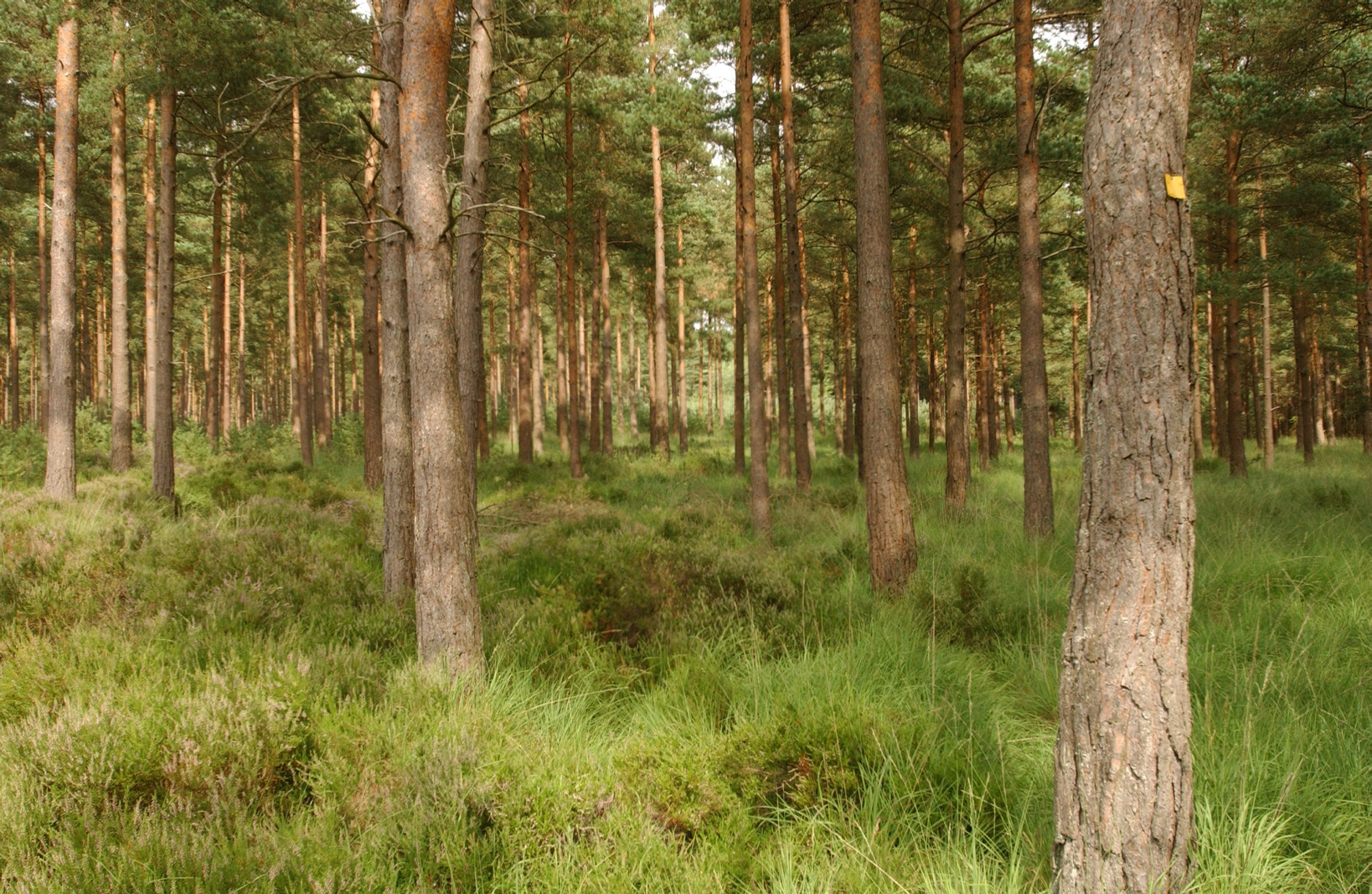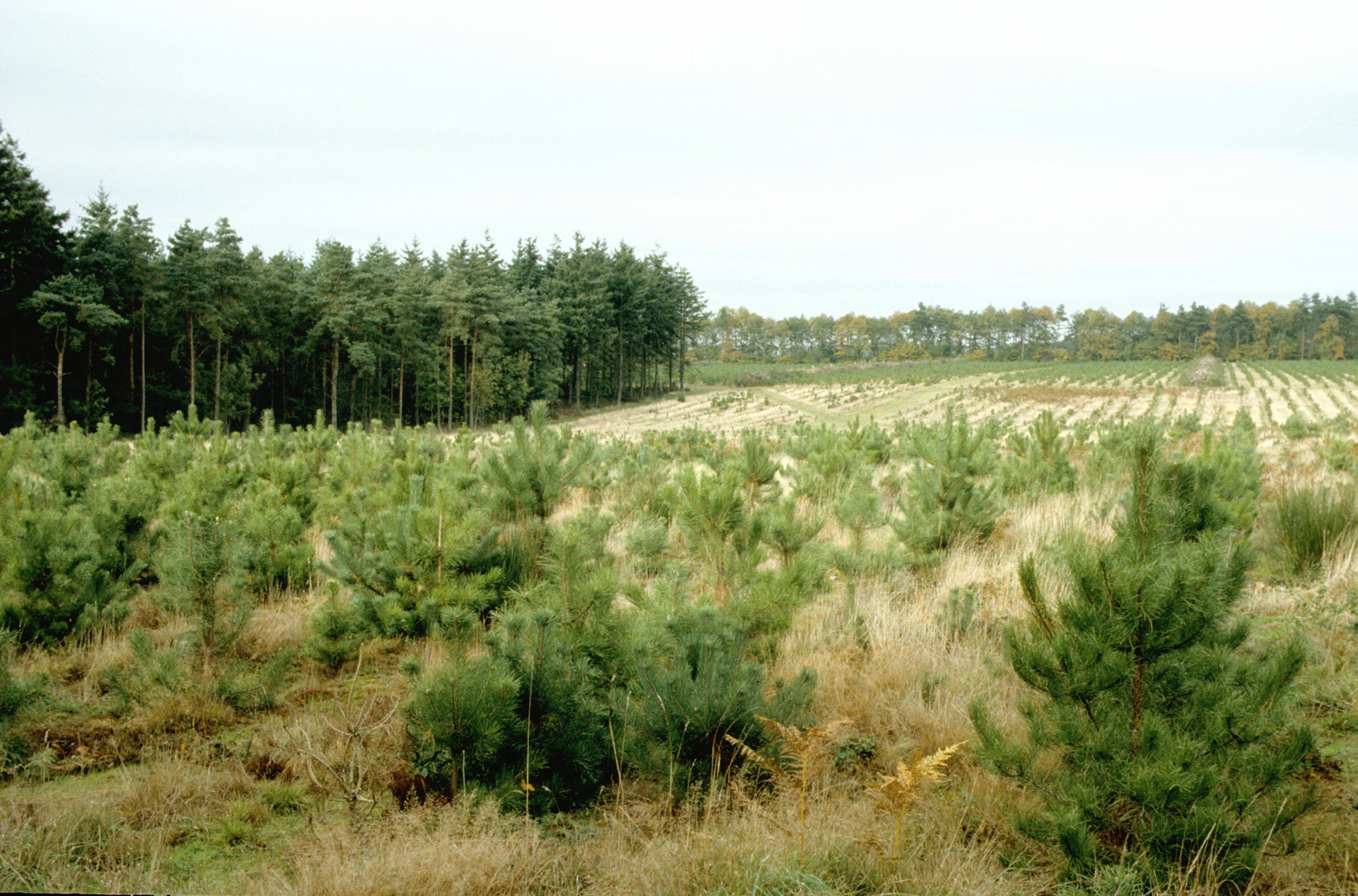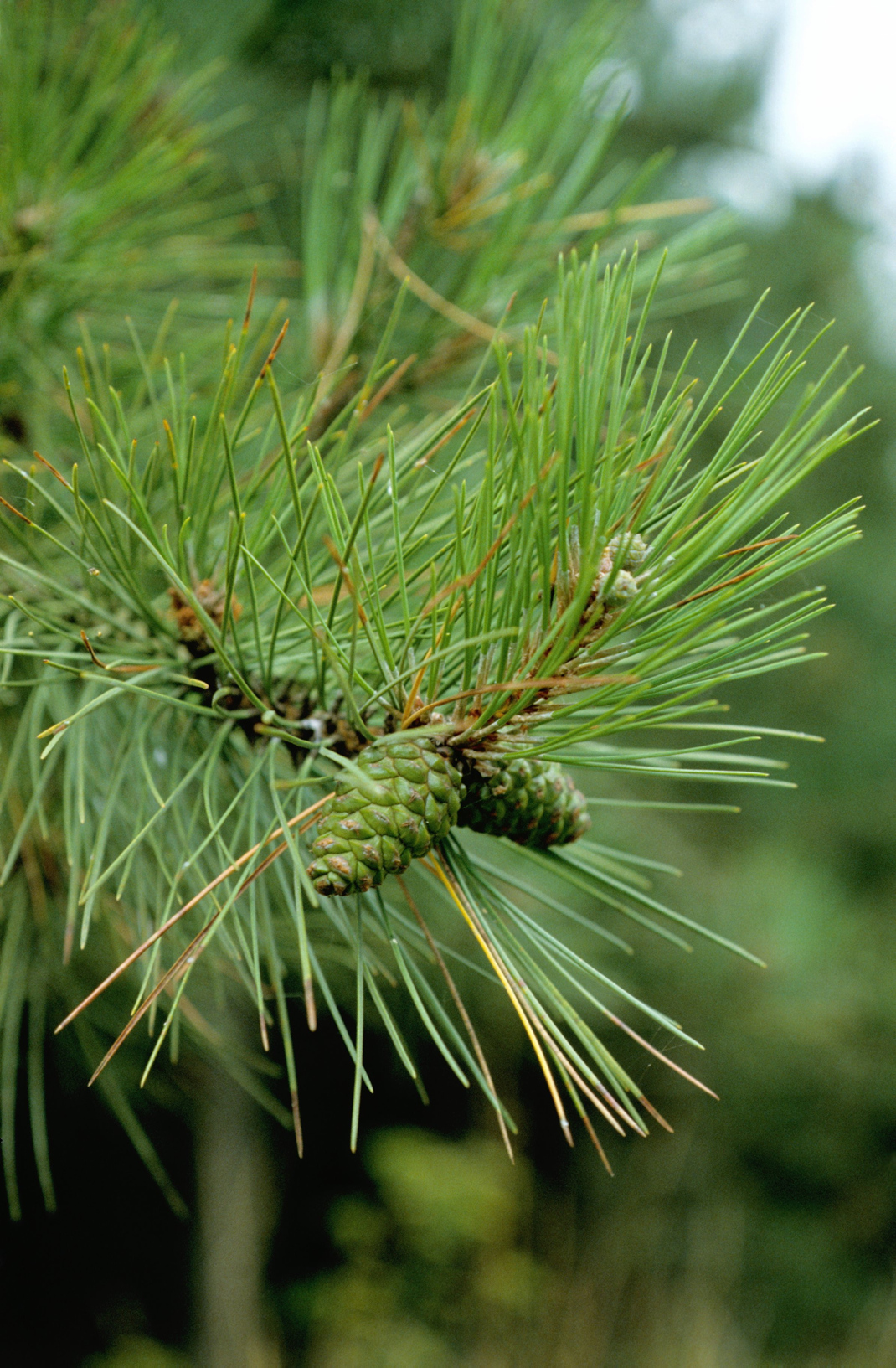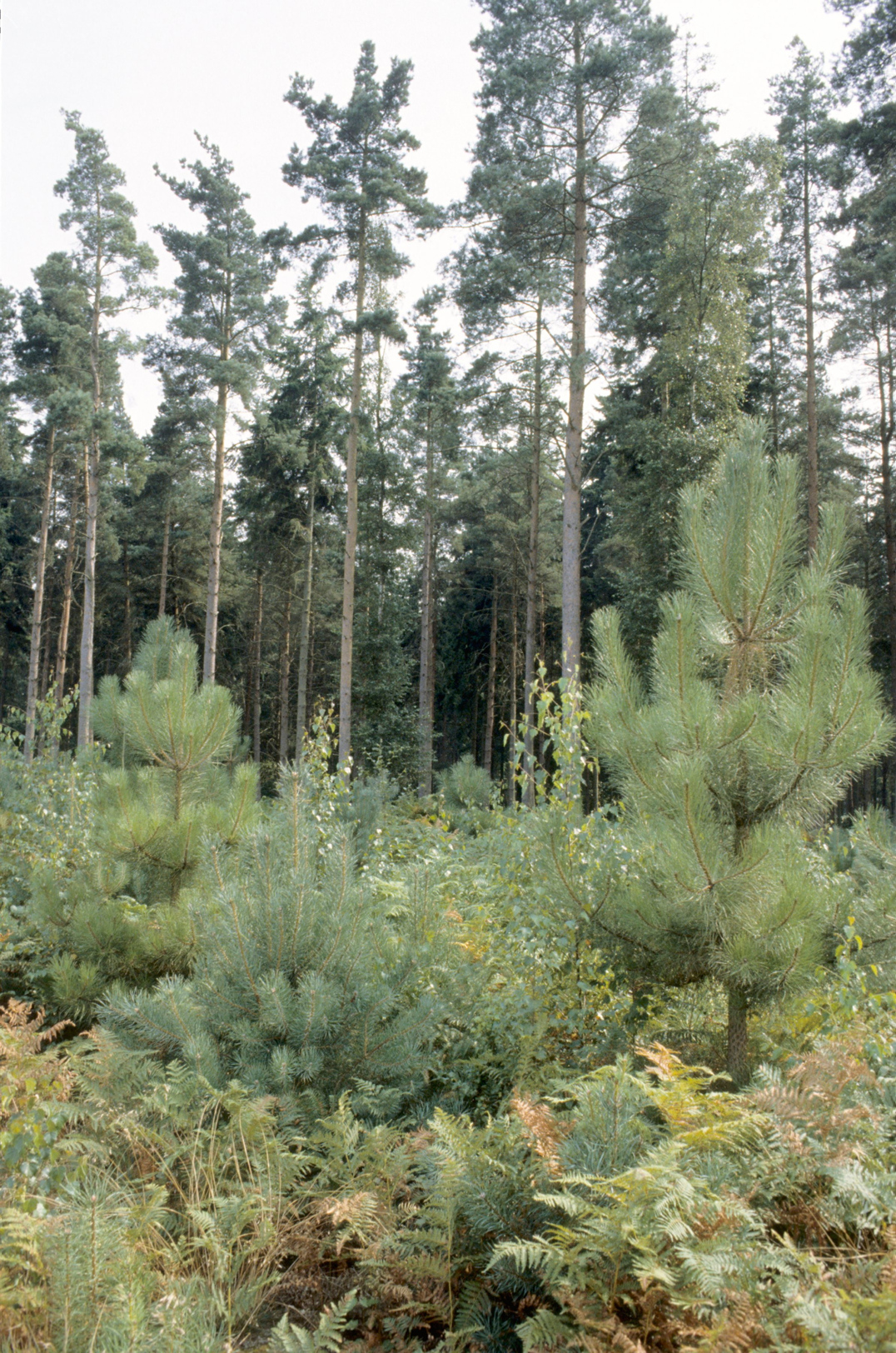Corsican pine (CP)
Corsican pine is one of several black pine species that have geographically distinct ranges across central and southern Europe to Russia, the Balkans and north Africa. There are ongoing taxonomic discussions on nomenclature.
Early Corsican pine plantings pointed to better stem form and branching habit than the other black pines. This was possibly the key factor in it being the first pine species to be planted at any scale in Britain by the Forest Commission from 1919. It is still the dominant commercial pine species, but the disease red-band needle blight (Dothistroma septosporum) has seriously affected its productive potential and few new trees are being planted. A species that is likely to do better in a warming climate but with the disease restricting its use research is being undertaken to identify suitable alternative productive species.
Corsican pine is categorised as a Principal tree species. These are species where our silvicultural knowledge provides confidence to enable successful deployment across Britain. The species are either already widely used or are increasing in usage. They will continue to be important unless affected by a new pest or disease or become adversely affected by climate change.





Range
Corsican pine is native to Corsica and Italy (Sicily, on Mt. Etna; and the Apennines in Calabria), at elevations of 950-1800 m.
Provenance Choice
The best seed sources are from good British seed stands or imports from Corsica.
Site Requirements
A light demanding pioneer species with the best growth found on acid freely draining sandy loams. Requires a warm summer climate, tolerates heat and drought, windfirm but susceptible to frost damage in late spring, therefore best suited to the drier lowland areas of Britain where it produces higher volumes than Scots pine. Will grow on most soils except moist or compacted ones and will grow on calcareous soils provided these are well drained. It tolerates exposure and pollution and will grow well on sand dunes provided it is not directly exposed to salt spray.
Austrian pine (P. nigra subsp. nigra) shows greater tolerance of chalk and limestone, also withstanding exposure. However, it is not as vigorous as and has poorer form than Corsican pine and so would only be used on particular sites or for shelterbelts.
Further detail on the site requirements of Corsican pine in current and future climates can be examined using the Forest Research Ecological Site Classification Decision Support System (ESC).
ECOLOGICAL SITE CLASSIFICATION TOOL
Silviculture
Corsican pine should be planted at a spacing which will provide a stocking density of around 2500 stems ha-1 once the trees are established if sawtimber is to be produced. Lower densities risk the development of coarse branches on the lower stem that will result in timber downgrade, and the species does not readily self-prune.
Corsican pine is a tap rooted species and the root system can often be damaged during bare-root nursery production. For this reason, containerised seedlings are generally preferred. Rigorous control of competing vegetation is essential for good establishment. Canopy closure is usually achieved by 15-20 years. In even-aged stands, rotations of 50-70 years are common, but longer rotations may result in improved timber quality. The average yield class is around 10-12 m3 ha-1 yr-1 but values of up to 20 can occur on more fertile sites.
Although traditionally grown in even-aged monocultures, Corsican pine is well suited to being grown in mixtures with broadleaves such as oak or beech and is being managed as an overstorey in two storied stands, provided the local windthrow risk allows regular thinning. Regular and heavy thinning is critical for maintaining the health of Corsican pine stands, since the airflow through more open canopies reduces humidity and the risks from Dothistroma.
A growing practice in maintaining the longevity of Dothistroma infected stands is to heavily thin and underplant with shade tolerant species. This has had various levels of success across plantations in the east and central England. The process is still broadly experimental and long-term issues such as timing of overstory thinning / felling and appropriate underplanting species mixes is still be considered.
Corsican pine begins to produce seed at 25-30 years, but natural regeneration is uncommon in Britain, partly because of irregular seed years and because vegetation competition hampers the development of young seedlings.
This species was predicted to increase in importance with climate change, especially in lowland and eastern regions of Britain, but its current vulnerability to red band needle blight means that its future is uncertain.
Pests and Pathogens
Corsican pine is very susceptible to Dothistroma / red-band needle blight of pine (Dothistroma septosporum) and is currently not recommended for planting because of the impact of this disease. Lophodermella needle disease and shoot dieback caused by Brunchorstia disease (Gremmeniella abietina) are also widespread and damaging on Corsican pine of all ages especially on colder and more humid sites. Like Scots pine, Corsican can also suffer conifer root and butt rot caused by Heterobasidion annosum, with occasional mortality of young trees.
Shoot killing by pine-shoot beetle (Tomicus piniperda) can also reach significant levels in Corsican pine.
See our other tools and resources
Further Resources
Internal
In addition to the general sources of information for species the following are useful for Corsican pine.
Kerr G. and Haufe, J. 2016 Successful underplanting; A Silvicultural Guide. Forestry Commission.
External
In addition to the general sources of information for species the following are useful for Corsican pine.
Enescu, C. M., de Rigo, D., Caudullo, G., Mauri, A., Houston Durrant, T., 2016. Pinus nigra in Europe: distribution, habitat, usage and threats. In: San-Miguel-Ayanz, J., de Rigo, D., Caudullo, G., Houston Durrant, T., Mauri, A. (Eds.), European Atlas of Forest Tree Species. Publ. Off. EU, Luxembourg, pp. e015138+
Kerr, G. (2000) Natural regeneration of Corsican pine (Pinus nigra subsp. laricio) in Great Britain. Forestry: An International Journal of Forest Research. 73 (5), 479–488. https://doi.org/10.1093/forestry/73.5.479
Reynolds, C., Kerr, G. and Forster, J. (2022) Alternatives to Corsican pine: evidence and experience from a long-term experiment in Thetford Forest. Quarterly Journal of Forestry. 116 (2), 92-99.




